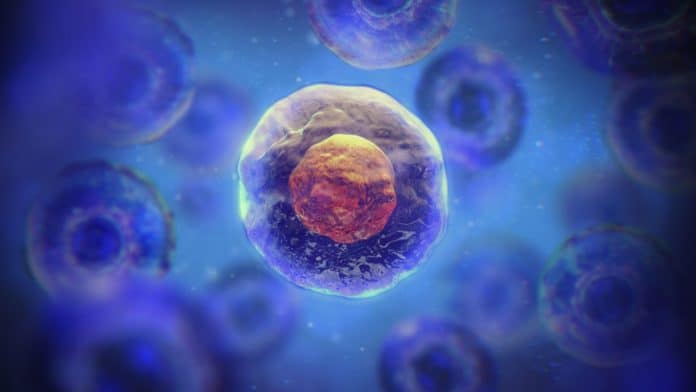The cell nucleus was believed to be elastic like a rubber ball. It deforms and snaps back into shape as the cell navigates through pores and between fibers inside the human body. Now, scientists from Texas A&M University and the University of Florida have found that the cell nucleus is more complex than previously believed.
They discovered that it behaves more like a liquid drop than a rubber ball. The study calls for a fresh look at how the nuclear shape becomes abnormal in diseases like cancer.
The nucleus contains a genome that monitors a cell’s function and behavior. Misshapen nuclei are warning signs of diseases like cancer. It is possible for cancer cells with such an aberrant nucleus to spread throughout the body, a process known as cancer metastasis, which has the potential to be fatal.
Even now, observations of nuclear shape are utilized to diagnose cancer. However, the cause of aberrant nuclei has remained a mystery. It may be possible to develop novel methods for treating cancer by helping cell nuclei recover their normal shapes by understanding how they become abnormally shaped.
The findings from this study are critical to understanding how a protective layer surrounding the nucleus, called the lamina, helps preserve nuclear shape. At the same time, cells crawl through the tortuous paths through pores and around tissue fibers.
Scientists, in this study, explored nuclear behaviors by placing fibroblasts into a miniature obstacle course of tiny, flexible pillars 1/100th of the width of human hair. The cells’ nucleus had to squeeze between the pillars, crawling through this maze of obstacles.
The scientists studied the movements using a cutting-edge, high-resolution microscope that could capture images of the nuclei’s three-dimensional structures. The imaging also revealed the pillars created deep indentations into the nuclear surface. Yet the overall nuclear shape was preserved, allowing the nucleus to pass successfully like a liquid drop, unlike a springy elastic rubber ball, through the obstacles.
The study also showed that the nuclei become entangled in the obstructions due to a lack of lamin A/C, one of the regular protein components of lamina. The finding indicates that lamin A/C aids in preserving the “nuclear drop’s” surface tension.
Dr. Tanmay Lele, Unocal Professor in the Department of Biomedical Engineering, said, “Our work points to a fundamental mechanism by which the nucleus preserves its shape and protects its genome. Our discovery also helps us better understand how misshapen nuclei arise in cancer and how to potentially make them normal again. We are now studying the implications of the drop model for the abnormal nuclear shapes commonly observed in cancer.”
Journal Reference:
- Aditya Katiyar, Jian Zhang et al. The Nucleus Bypasses Obstacles by Deforming Like a Drop with Surface Tension Mediated by Lamin A/C. Advanced Science, 2022; 9 (23): 2201248 DOI: 10.1002/advs.202201248
